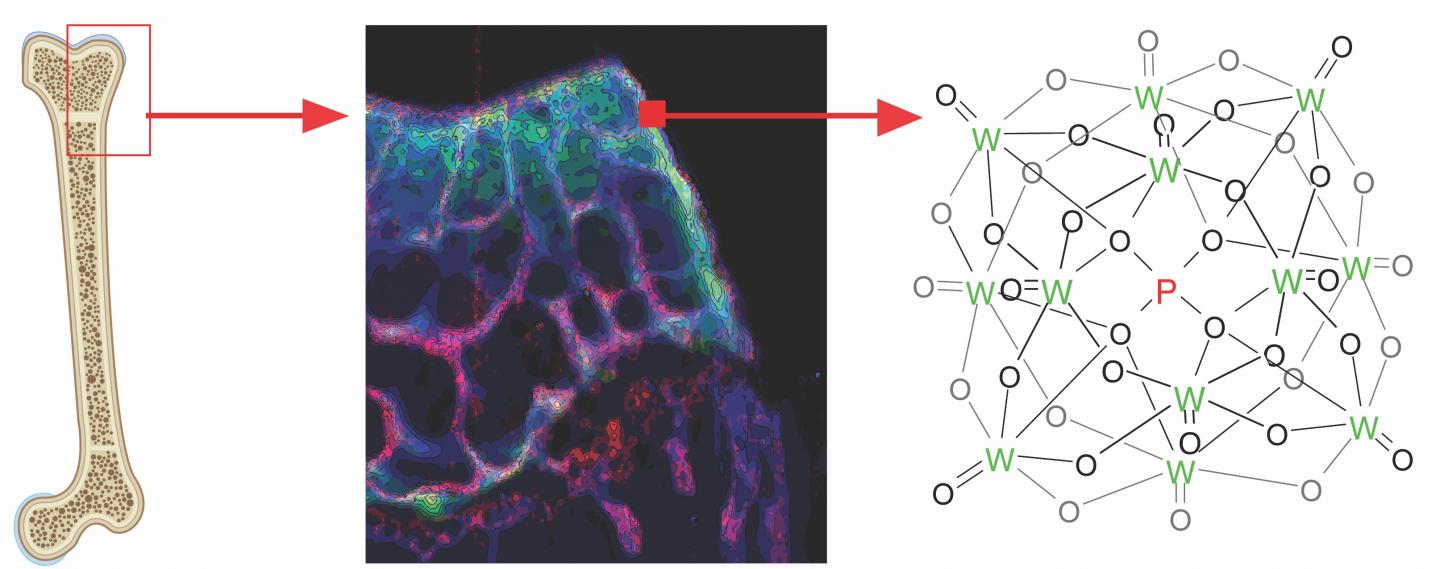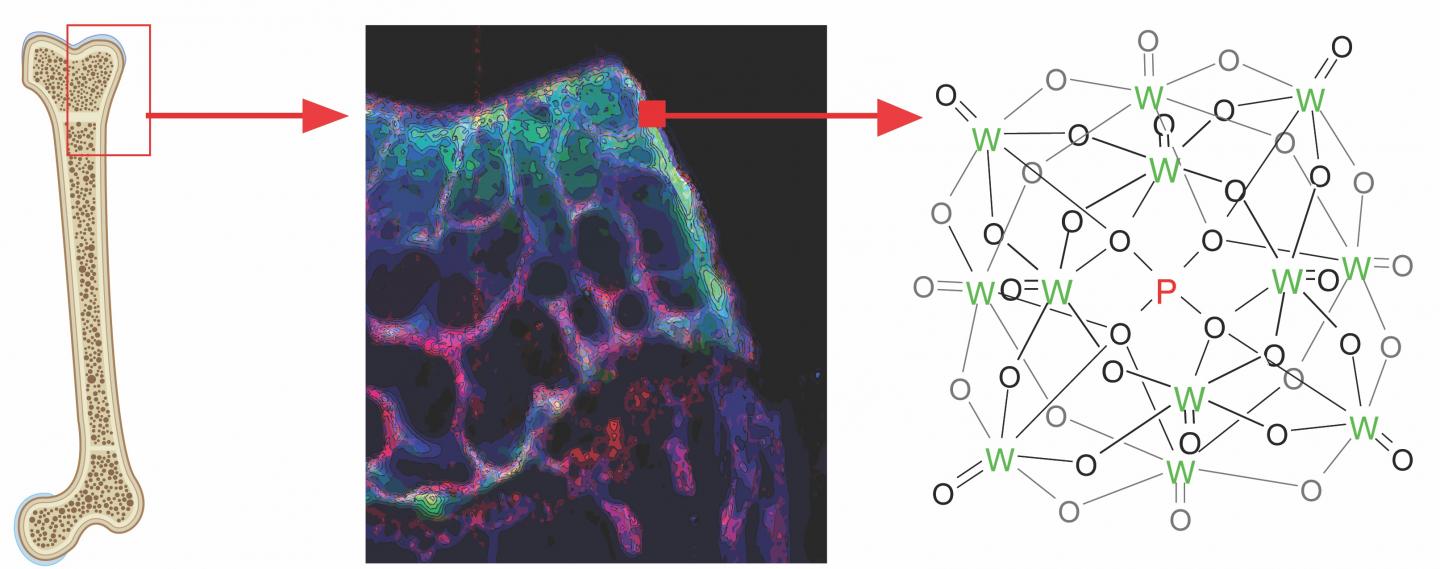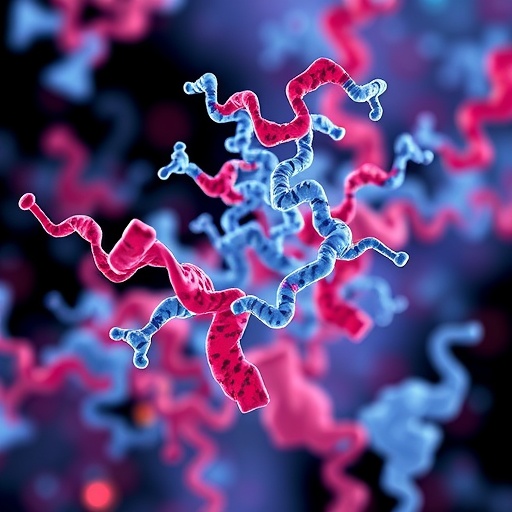
Credit: Cassidy VanderSchee
New research shows how and where tungsten accumulates in bones of mice exposed to the element through drinking water. The findings, by a team of chemists and biologists at McGill University, could add to doubts over the once-universal assumption that tungsten poses little or no health risk to the general human population.
With the highest melting point of any metal, tungsten's remarkably high density and hardness make it a prized ingredient in a range of industrial, military and medical applications. Used in cutting tools, ammunition, medical devices and even some medications, tungsten has become part of our daily lives.
While many regulatory agencies have set limits on exposure to airborne tungsten dust – primarily to protect workers who mine and process the metal – there are very few officially mandated limits on water-soluble tungsten compounds, to which a broader cross-section of the community are at risk of exposure.
The issue came to prominence in the early 2000s when scientists investigated a possible link between a cluster of childhood leukemia cases in Fallon, Nevada, and high levels of tungsten in the groundwater from which the town drew its supply. The case prompted the US Centers for Disease Control and Prevention to nominate tungsten for toxicology and carcinogenesis studies.
Mixed results from previous toxicity studies
To date, research into tungsten's toxicity and possible role as a carcinogen has produced mixed results. Some studies have shown that other communities exposed to tungsten levels comparable to those in Fallon were not affected by a higher-than-normal incidence of cancer – a finding that appeared to exonerate tungsten. But subsequent research has revealed that in subjects exposed to both tungsten and cobalt, tungsten appears to augment the toxicity of the other substance. These findings pointed to a need to better understand how tungsten accumulates in the body and in what form, and to what extent the body is capable of eliminating tungsten following exposure.
The McGill team's study on tungsten exposure in mice, published in Communications Chemistry, used powerful x-ray spectroscopy techniques to find answers to these questions. The results raise a number of concerns.
While tungsten has previously been shown to accumulate in bone, the McGill researchers found that the element didn't accumulate uniformly across bones; rather, it was concentrated in certain hot spots.
"We found that tungsten, once thought to be non-toxic and inert, does in fact accumulate heterogeneously in bone," said Cassidy VanderSchee, lead author of the study and doctoral student in the Department of Chemistry at McGill. "Not only that, we found that it accumulated in a chemically different form to that in which it was administered, which confirmed that tungsten is chemically active in the body."
Accumulation in bone tissues
The study showed that in mice exposed to high levels of tungsten through drinking water, the element accumulated in specific regions – bone marrow and porous (or 'cancellous') bone tissue – to a degree 10 times greater than background levels. The deposition of tungsten in cancellous bone suggests the element is incorporated during bone growth and remodelling, indicating that young, growing individuals are particularly susceptible.
The researchers also found that tungsten was retained in the bone's hard outer layer – the cortex – even after the mice were given tungsten-free water for a period of eight weeks after initial exposure. With the body unable to clear tungsten from this tissue, the bone effectively becomes a source of chronic exposure.
Of even greater concern was the finding that tungsten was changing form in the body. The results showed that the element was accumulating in a form resembling phosphotungstate, a known chemical catalyst with significant potential to intervene in the biological processes that occur in bone marrow and cancellous bone – immune cell formation and bone growth among them.
"We believe that many of the biological effects of tungsten we've been investigating will be traced back to changes in the bone," says Koren Mann, associate professor of oncology at McGill and a co-author of the study. "This includes the effects on the immune system, stem cells, and cancer."
"While research continues into the health risks posed by human exposure to tungsten, our study provides important insights into how the element accumulates in the body – findings that are crucial to developing effective therapies for removing it," says McGill chemistry professor and senior author Scott Bohle.
###
The research was conducted in collaboration with scientists at the Canadian Light Source synchrotron in Saskatoon, Saskatchewan, and the U.S. Department of Energy's National Synchrotron Light Source II facility at Brookhaven National Laboratory in Upton, NY.
Funding for the research was provided by the Natural Sciences and Engineering Research Council of Canada, Canadian Institutes of Health Research, and the Canada Research Chairs Program.
"Accumulation of persistent tungsten in bone as in situ generated polytungstate," Cassidy R. VanderSchee et al. Communications Chemistry, published online Mar. 8, 2018. doi:10.1038/s42004-017-0007-6 https://www.nature.com/articles/s42004-017-0007-6
Media Contact
Chris Chipello
[email protected]
514-398-4201
@McGillU
http://www.mcgill.ca
Original Source
http://mcgill.ca/newsroom/channels/news/safety-concerns-over-tungsten-286631 http://dx.doi.org/10.1038/s42004-017-0007-6





